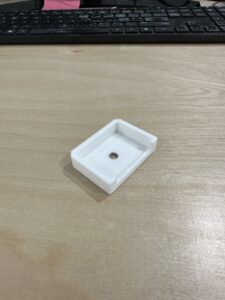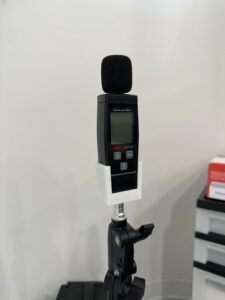Blog 9: Cell Division
Going subsonic: Why drones have their distinctive hum and how propeller design can help fix it.
Blog 9: Cell Division
This week was very productive for drone testing and acquisition. I am reformatting what I have done to be more physically appealing and understandable for anyone who reviews my work. For example, my 3D designs have gone through a few phases of refinement as I transitioned from the clutter of problem-solving to a consistent methodology. Said methodology is now included in my Google Sheet under “Reference.”
Also in my sheet is a large amount of test conditions. I have chosen a few that are the most important and which I expect to be the most impactful:
- Blade Count
- Blade Length
- Blade Width
- Tip Sharpness
- Angle of Attack
I have also made an important decision concerning the types of propellers I will be testing. Because of their multifaceted advantages and proven feasibility so far, I will only be focusing on Toroidal propellers for the comparisons section of my project. They are relatively simple to design, have beneficial print characteristics, and allow for a wide variety of changes without affecting the whole operation of the drone, all of which I’ve detailed in previous posts.
My testing process, too, has been refined. To keep the sound measurements consistent, I borrowed a tripod from Pilot Institute’s production team and designed a frame piece that allows the sound tester to sit on top. For the propeller test rig, I will be building a wooden stand from dumped construction debris around my neighborhood. I have gotten permission from Pilot Institute to use the sound-insulated studio for my measurements. This is a great help, as construction has continued around my cubicle at the office.
|
|
 |
For the end of this post, I would also like to explain some problems that I have noticed and some that I expect in the future with my measurements. First is the use of low-storage batteries, thus producing a decreasing thrust as I test and discharge the batteries. To counter this, I will be testing propellers in an unusual ABC-CBA order and taking an average. I got my inspiration from the Catan board game, which uses this order for player setup. Similar to my case, there’s an advantage of being first to place pieces in the game, which is why the turns are ordered to make the first player (A) also be the last player to act later. Another way I will avoid battery charge influence is by testing to a lower power/speed. I will place the remote at the large center tick for thrust, hopefully halving the exertion of the motors and batteries. This will also halve the drainage of the battery, reducing the effect of discharge overall.
The next problem is something I expected when planning my project at the beginning. Since noise is a component of performance in my project, I will have to find a way to compare noise using a single decibel level, ignoring the frequency of the noise produced. The reason this is an issue is apparent if you’ve ever heard a toroidal propeller spin; they have much deeper “whooshing” sounds compared to the “whir” of traditional propellers. There are two important effects of this. First, deeper sounds are often noticed by humans to be less grating and more pleasant. Secondly, deeper sounds travel further (consider lightning, which has a large “crack” sound nearby that turns into a rumble at a long distance), which can create problems with comparing noise and where the most important reference distance is. To combat this slightly, I will only be comparing toroidal propellers to each other, reducing the high-low frequency difference. I will also be testing sound at two distances to account for attenuation across all frequencies.
Next week, I will be building my drone with the help of a Pilot Institute expert and a few Chinese manuals. I had issues with my Speed Controllers (they were around twice as big as the drone arms they sit on), so I have replaced them with a 4-in-1 ESC chip, which fits easily on the main body and wires into all four motors at once. Returning the incorrect parts was easy, and Temu let me keep one of them without returning it, so I can use it for anything else I’ll need.
Propeller spreadsheet (much more detailed, but does not contain the measurements I’ve collected) https://docs.google.com/spreadsheets/d/1QnVORPgaP6eOXAQWGW8OxpOkJtlu77fsbD5rLiyG7hs/edit?usp=sharing.


Comments:
All viewpoints are welcome but profane, threatening, disrespectful, or harassing comments will not be tolerated and are subject to moderation up to, and including, full deletion.